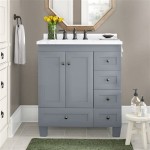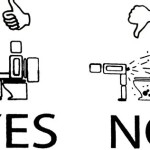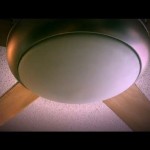Is a Bathroom Exhaust Fan Required By Code?
Ensuring proper ventilation in a bathroom is crucial for maintaining a healthy and comfortable living environment. One of the primary components contributing to good ventilation is the exhaust fan. This essential appliance plays a vital role in removing moisture, odors, and pollutants from the air, preventing mold growth and creating a more pleasant atmosphere. But is a bathroom exhaust fan legally required? This article will delve into the building codes and regulations surrounding bathroom exhaust fans, providing a clear understanding of the requirements and their rationale.
Building Codes and Regulations
The requirement for bathroom exhaust fans is primarily governed by local building codes. These codes vary from region to region and are designed to ensure public safety and health. While the specific requirements may differ, many jurisdictions mandate the installation of a bathroom exhaust fan for specific types of bathrooms. Generally, the following criteria trigger the need for an exhaust fan:
- Bathrooms with a shower or bathtub: This is the most common requirement, as showers and bathtubs produce a significant amount of moisture.
- Bathrooms without windows: If a bathroom lacks natural ventilation through windows, an exhaust fan is essential for removing moisture and pollutants.
- Bathrooms with specific square footage: Some codes might specify a minimum bathroom size that necessitates an exhaust fan.
It is important to note that building codes can evolve over time. Therefore, it is always advisable to consult the current building code requirements for your specific location before constructing or renovating a bathroom. This can be achieved by contacting your local building department or consulting online resources provided by your city or county.
Importance of Bathroom Exhaust Fans
The installation of a bathroom exhaust fan is not just a legal requirement but a crucial aspect of maintaining a healthy and comfortable living environment. The primary functions of a bathroom exhaust fan include:
Moisture Control
Bathrooms are prone to high humidity levels due to showering, bathing, and other activities. Excessive moisture can lead to various problems, including:
- Mold and mildew growth: Damp environments provide ideal conditions for mold and mildew to thrive, potentially causing respiratory issues and allergies.
- Wood rot: Moisture can damage wooden structures, leading to rot and weakening of the bathroom's framework.
- Structural damage: Excessive moisture can cause stains, warping, and other damage to walls, ceilings, and floors.
A properly functioning exhaust fan effectively removes moisture from the air, minimizing these risks and creating a drier, healthier environment.
Odor Removal
Bathroom activities can produce unpleasant odors that linger in the air. An exhaust fan helps to eliminate these odors by drawing them out of the bathroom and expelling them to the exterior.
Pollutant Removal
Bathroom activities, such as showering and using cleaning products, release various pollutants into the air. These pollutants can include volatile organic compounds (VOCs), which can be harmful to human health. An exhaust fan helps to remove these pollutants, improving the indoor air quality and reducing the risk of health problems.
Energy Efficiency
Bathroom exhaust fans play a role in improving energy efficiency by reducing the need for heating and cooling. By removing excess moisture, exhaust fans help to keep the bathroom at a comfortable temperature, minimizing the reliance on HVAC systems.
Selecting and Installing an Exhaust Fan
When selecting a bathroom exhaust fan, consider factors such as:
- CFM rating (Cubic Feet per Minute): This rating indicates the volume of air the fan can move per minute. A higher CFM rating is necessary for larger bathrooms or those with multiple showers or bathtubs.
- Noise level: Choose a fan with a low noise level to minimize disturbance, especially for bathrooms located near bedrooms.
- Features: Some fans offer additional features like humidity sensors, timers, or lights.
Proper installation of an exhaust fan is crucial for its effectiveness. Consult with a qualified contractor or electrician to ensure the fan is installed according to local codes and safety standards. This includes connecting the vent to the exterior of the building and ensuring proper sealing to prevent leaks or drafts.
In conclusion, a bathroom exhaust fan is often a legal requirement, but its significance extends far beyond code compliance. It plays a crucial role in maintaining a healthy, comfortable, and safe environment for all. By understanding the importance of bathroom exhaust fans and adhering to building codes, we can ensure the well-being of our homes and our families.

Code Requirement For Bathroom Vent Location Exhaust Checkthishouse

Bathroom Exhaust Fans Building America Solution Center

Bathroom Exhaust Fan Gfci Vent Protection Requirements Checkthishouse

Do You Need A Fan In Bathroom With Window Hvac Boss

Ventilation Pa Energy Code

We All Like To Vent Dealing With The Hot And Moist Air Ncw Home Inspections Llc

Can A Bathroom Fan Vent Into The Attic Code Explained Building Trainer

Ventilation Pa Energy Code

Bathroom Exhaust Vents In Your San Antonio Area Home Jwk Inspections

Bathroom Exhaust Fans Building America Solution Center







